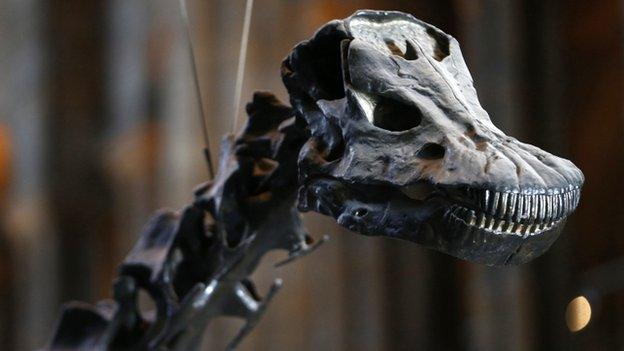#SaveDippy - but why do we care?
- Published
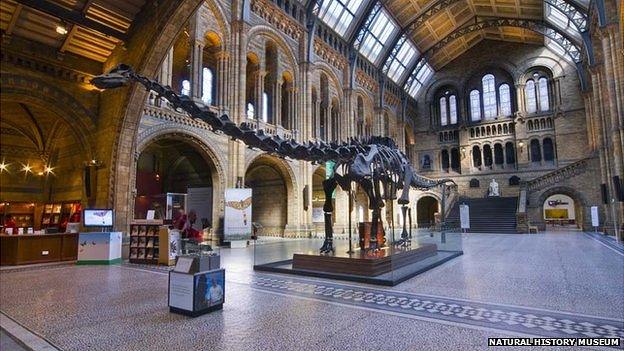
Fans are heartbroken at the news Dippy the diplodocus will no longer be centre stage at the museum
Dippy the diplodocus is being removed from the entrance of the Natural History Museum, an announcement which has prompted a Twitter storm of grief. While the dinosaur's days in the spotlight are numbered, the question arises - why do we care?
The London museum has revealed it will be replacing the much-loved dino display with a 25m-long skeleton of a blue whale to "increase the wow factor" for visitors.
But their decision has proven very unpopular. Within hours of the announcement the hashtag #SaveDippy was trending on Twitter and newspaper Metro had launched an online petition for Dippy's reinstatement, which gathered thousands of signatures.
"Are the Natural History Museum out of their minds?? My four year old is about to take part in her first protest," tweeted, external Dippy supporter Jane Merrick.
"Removing Dippy from the @NHM_London is like removing the Eiffel Tower from Paris #savedippy," said, external another dinosaur fan, Ruaridh Arrow.
But why are people upset about the removal of a replica dinosaur skeleton?
Probably, it is due to the loss of a collective symbol of childhood memories.
"I grew up crazy about dinosaurs and [Dippy] was a big part of my childhood," said children's author and illustrator, James Mayhew.
"One of the significant moments for kids going to the museum was seeing Dippy. I think its incredulous that anyone would make the decision to remove something so iconic and so extraordinary."

Childhood memories

Have you had your photograph taken with Dippy, a Beefeater or Mickey Mouse? Send your favourite childhood photographs to england@bbc.co.uk

"This is perhaps something to do with feeling nostalgia," said Prof Tamara Ansons from the University of Warwick.
"Seeing Dippy in the entrance is probably a very memorable experience for most people and they are distressed that this distinctive feature is being removed [because] a part of their childhood is being removed.
"People remember those [moments] when they're old and they want to share that with their children and grandchildren and they're sad about the loss of that."
A comparison can be drawn with other milestone moments throughout childhood which are captured through the eye of a camera lens; the photos taken with Father Christmas, Mickey Mouse or a Beefeater at the Tower of London.
"A photo with Dippy may have been something families did as an annual event, like [having] pictures with Santa," said Prof Ansons. "That's a very strong cue to childhood memories, it's not only a reminder of your experience, but a reminder of that great day you had or the visit or the people you were with."

Dippy the diplodocus
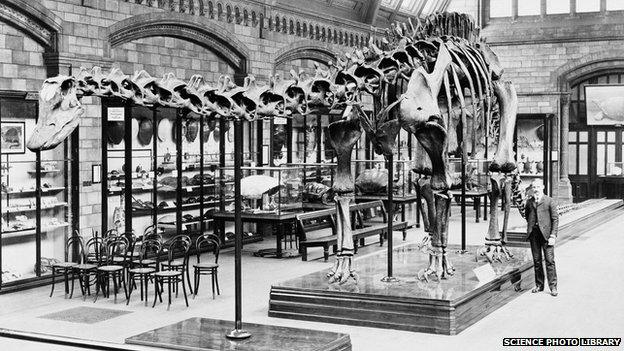
Railroad workers unearthed the fossilised bones of a diplodocus in Wyoming, USA, in 1898
The replica cast was made by order of King Edward VII who had seen a sketch of the dinosaur and wanted a similar specimen in London
Dippy was unveiled to the public at a lavish ceremony in 1905
He was put in storage during World War Two to protect him from potential bomb damage
The 292-bone skeleton was moved to Hintze Hall in 1979, where he has posed for pictures with generations of children and adults ever since

Museum director Sir Michael Dixon called the move a "necessary change" to reflect the best in cutting-edge science. After all, Dippy is "just a copy", he said.
But the fact the prehistoric statue is a replica has proved irrelevant to hoards of his heartbroken fans.
Is the outcry over his retirement justified?
Kitty Ross, from Leeds Museums and Galleries, said exhibits took on a life of their own for many visitors, particularly when they became a character or mascot like Dippy.
But, she added, it is unusual for an exhibit to last as long as the diplodocus has.
"People get very emotionally attached to what's there, particularly if it's something they visited as a child. Museum visits for children can form an image in their mind and they expect to see it again.
"You get that reaction when you make changes to things that people have fond memories of," she added.
Though Dippy's days of greeting generations of visitors may be numbered come 2017, it is not the end of the road for the dinosaur, who could find himself on tour raising the profile of regional museums in the UK.
"After inspiring millions of visitors over 35 years, it's no surprise to me that some want to keep the diplodocus centre stage. We love Dippy too," said Sir Michael.
"Once it leaves Hintze Hall, taking the diplodocus on tour would inspire many more millions of people and, given the public response, we will now see how we can involve people in making this tour happen."
- Published29 January 2015
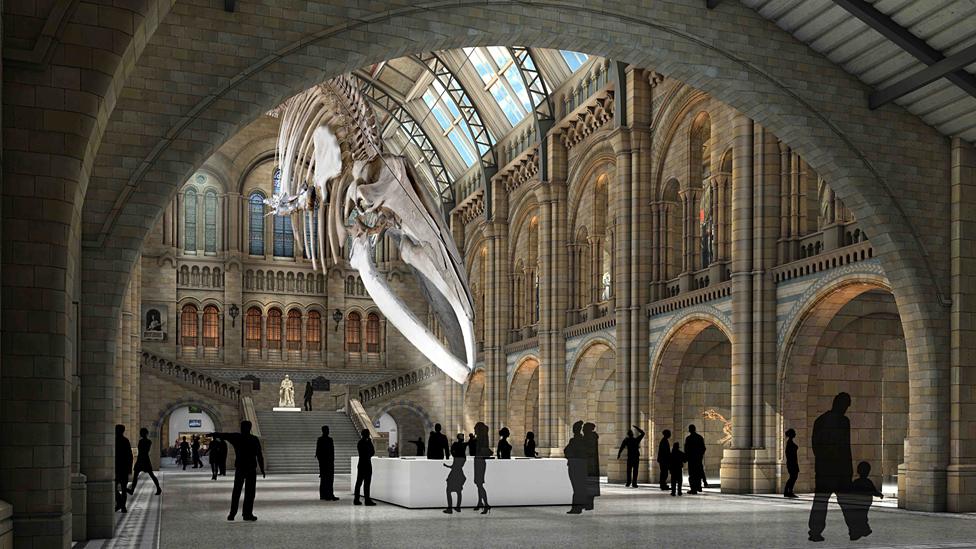
- Published29 January 2015
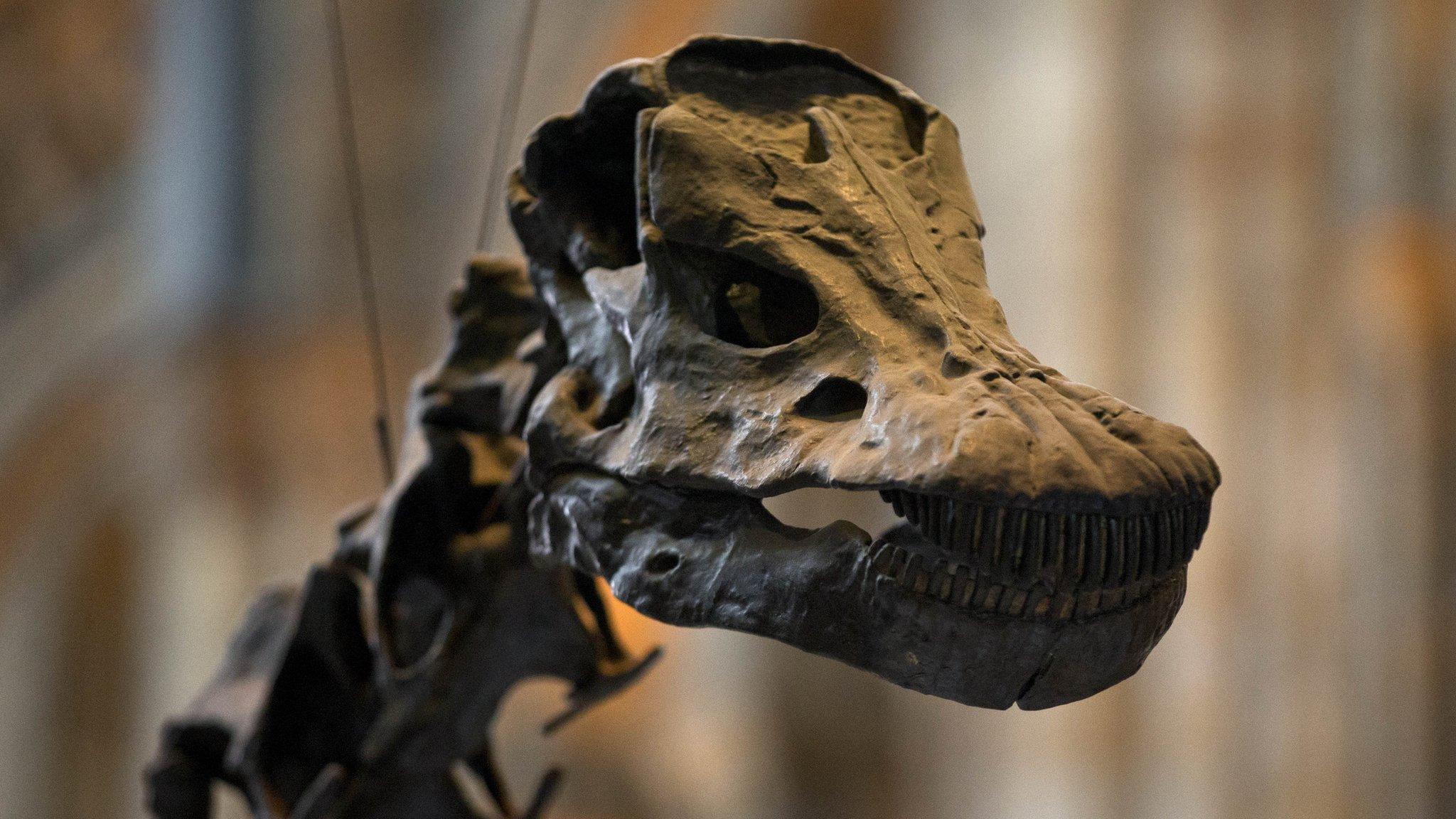
- Published29 January 2015
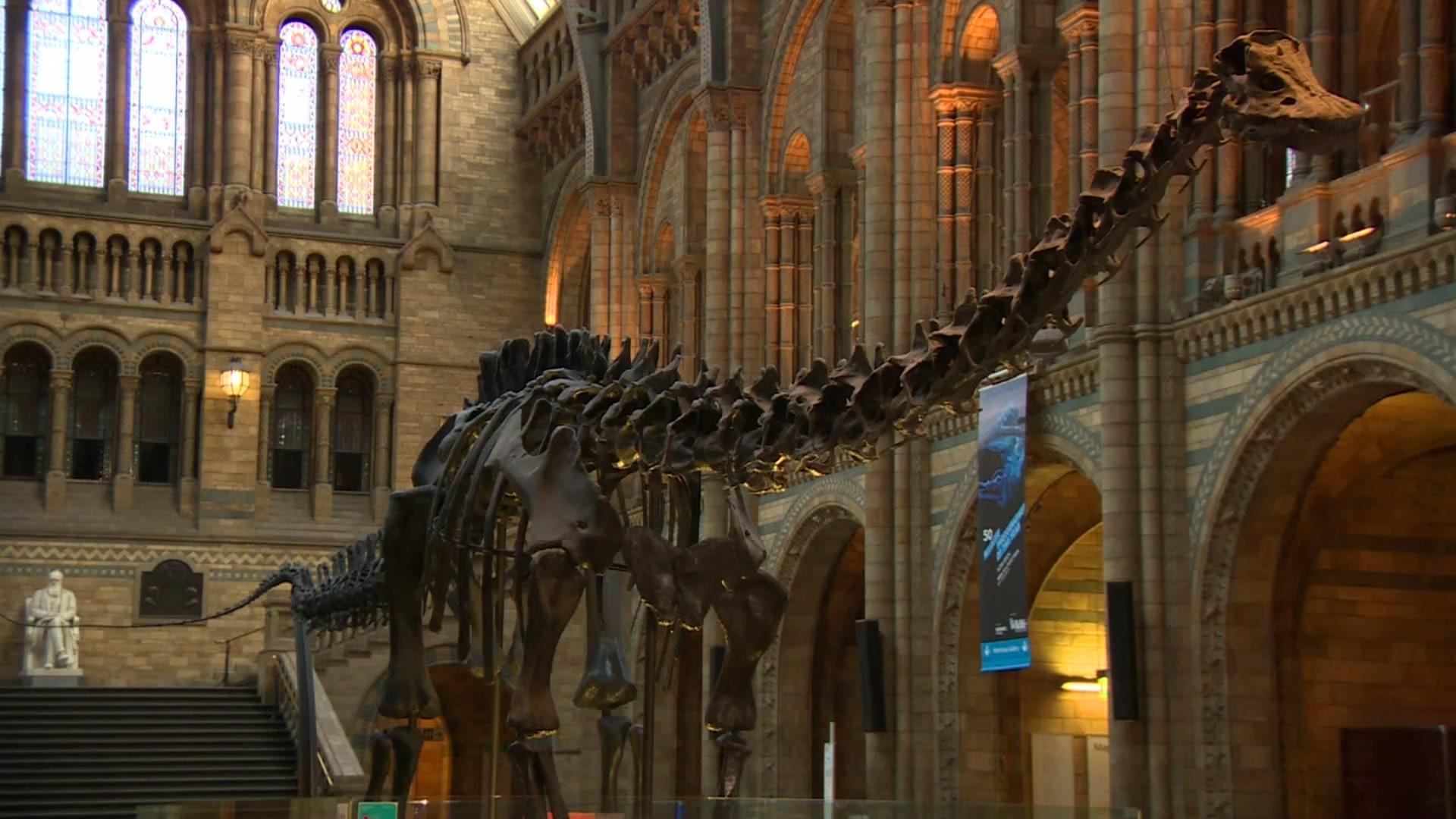
- Published29 January 2015
